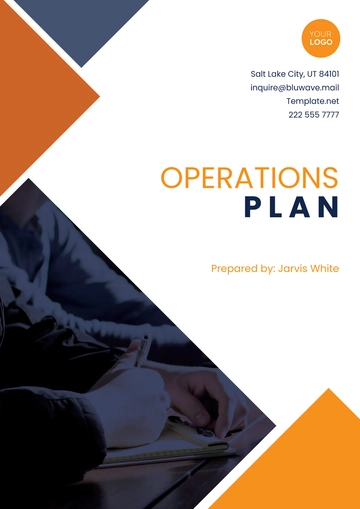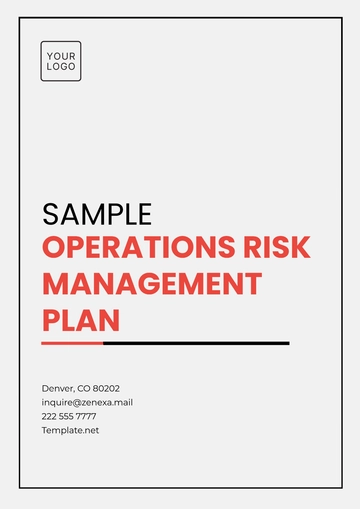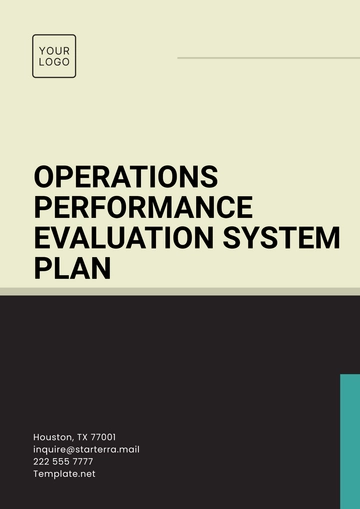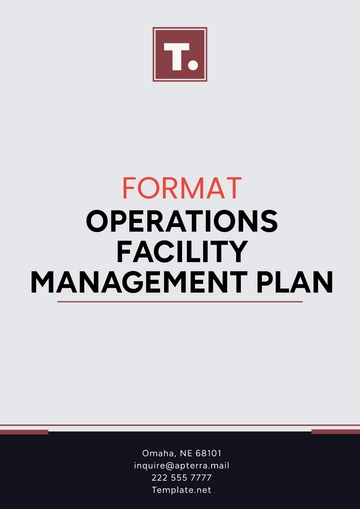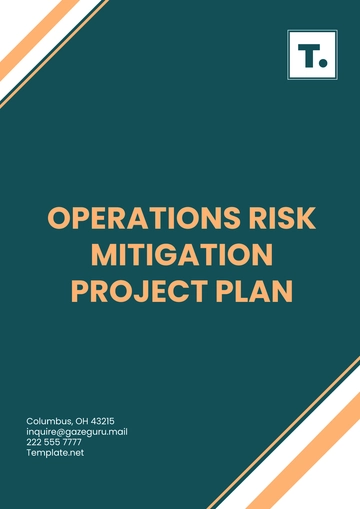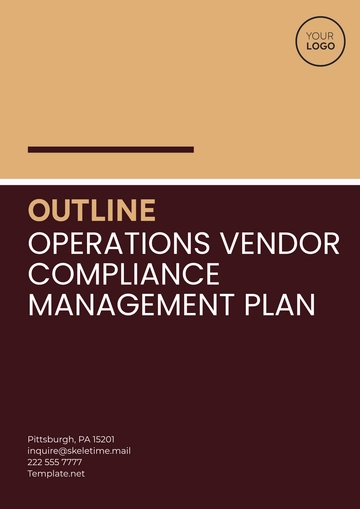Free Military Operations Plan
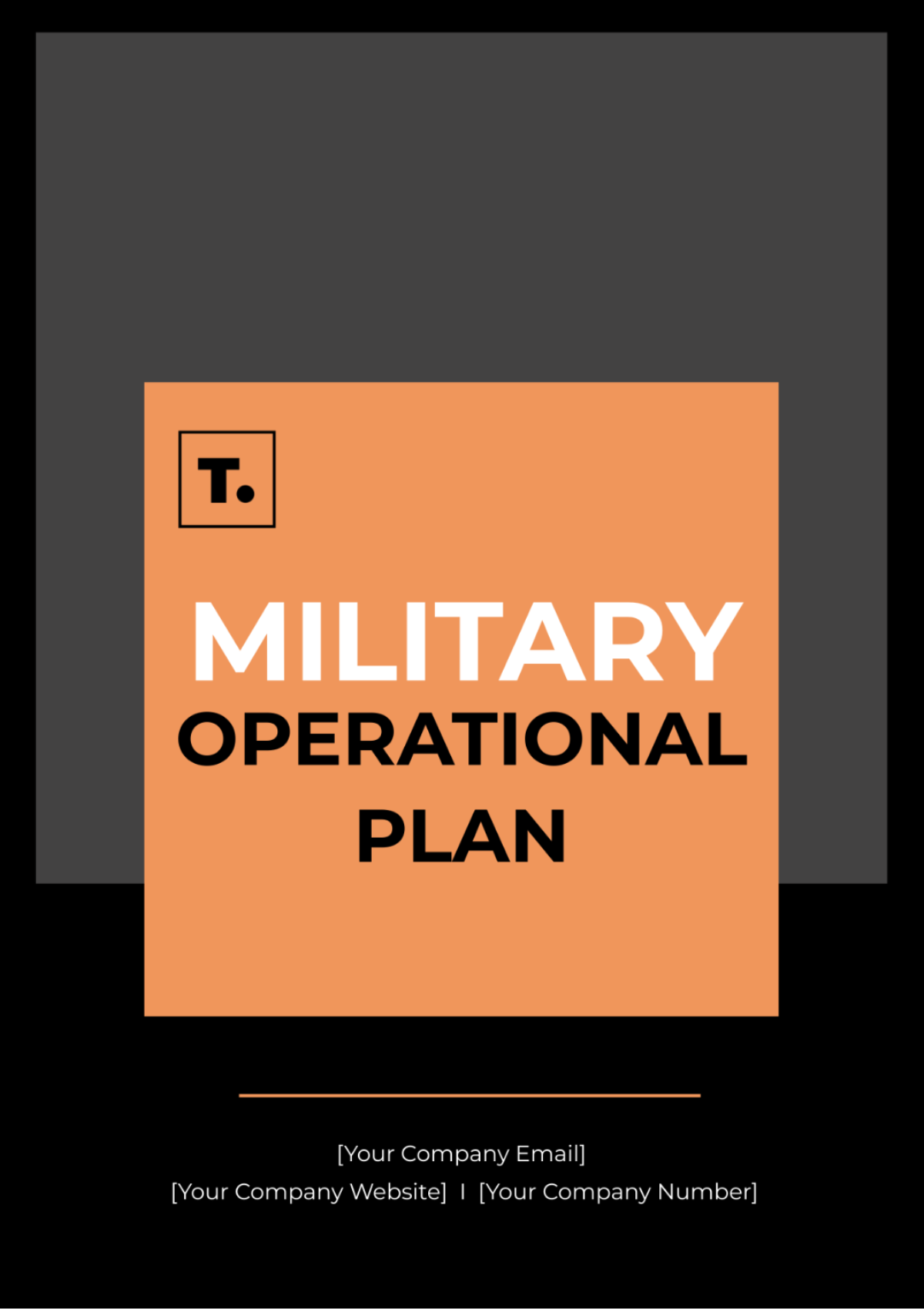
I. Executive Summary
Objective
The objective of this military operation is to conduct a rapid response counter-terrorism mission to neutralize a terrorist cell operating in [Region]. The primary goal is to eliminate the threat posed by the terrorist organization [Terrorist Group] and restore stability in the region.
Key Considerations
Swift and decisive action is required to prevent further escalation of terrorist activities.
The operation will require close coordination with local security forces and intelligence agencies to gather actionable intelligence.
II. Situation Analysis
A. Operational Environment
Enemy Forces:
The terrorist cell consists of approximately 50 militants trained in guerrilla tactics and explosives.
They are known to operate in mountainous terrain, utilizing caves and rugged terrain for cover and concealment.
Terrain and Weather
[Region] is characterized by dense forests and steep valleys, which may impact operational planning and execution.
B. Intelligence Assessment
Intelligence Sources:
Intelligence will be gathered from aerial surveillance, human intelligence assets, and intercepted communications.
Satellite imagery and drone reconnaissance will provide real-time situational awareness.
Threat Assessment:
[Terrorist Group] is highly motivated and possesses sophisticated weaponry, including improvised explosive devices (IEDs) and small arms.
They have demonstrated a willingness to target civilian populations and infrastructure to achieve their objectives.
III. Mission Statement
Objective
The mission is to locate and neutralize the leadership and operational capabilities of [Terrorist Group] within 30 days, minimizing collateral damage and civilian casualties.
Scope
The operation will encompass a 50-kilometer radius, with a focus on disrupting enemy supply lines and safe havens.
IV. Concept of Operations (CONOPS)
Strategy
Employ a combination of special operations forces and aerial strikes to target high-value individuals and infrastructure.
Conduct simultaneous raids on multiple enemy compounds to disorient and overwhelm the enemy.
Tactics
Utilize night vision and stealth technology to conduct covert insertions and reconnaissance.
Employ precision-guided munitions to minimize collateral damage and civilian casualties.
V. Task Organization
Command Structure
Joint Task Force Eagle Strike will oversee the operation, with [Your Name] serving as the overall commander.
Special Operations Task Group Shadow Blade will lead ground operations, supported by the 1st Special Forces Group.
Unit Allocation
1st Special Forces Group: Conduct reconnaissance and direct action missions.
101st Airborne Division: Provide aerial assault capabilities and close air support.
VI. Logistics and Support Plan
Supply Chain
Establish forward operating bases (FOBs) to provide logistical support and resupply for deployed forces.
Coordinate with local authorities and non-governmental organizations (NGOs) for humanitarian assistance and medical support.
Medical Support
Deploy medical evacuation (medevac) teams and field hospitals to provide emergency medical treatment for wounded personnel.
VII. Command and Control
Communication Plan
Utilize encrypted communication systems to maintain secure and reliable communications between command elements and deployed forces.
Establish redundant communication channels to mitigate the risk of signal jamming or interception.
Coordination Mechanisms
Conduct regular briefings and updates to ensure all units are aware of mission objectives and changes in the operational environment.
Implement a flexible command structure to adapt to changing circumstances and unforeseen challenges.
VIII. Risk Assessment and Mitigation
Risk Identification
Potential risks include enemy ambushes, improvised explosive devices (IEDs), and hostile civilian populations sympathetic to [Terrorist Group].
Environmental factors such as harsh terrain and inclement weather may impact operational effectiveness.
Mitigation Strategies
Conduct thorough reconnaissance and intelligence gathering to minimize the risk of surprise attacks.
Implement strict rules of engagement (ROE) to minimize the risk of civilian casualties and collateral damage.
IX. Timeline and Milestones
Key Events
[Date 1]: Deployment of reconnaissance teams to gather intelligence on enemy positions.
[Date 2]: Commencement of airstrikes targeting enemy strongholds and command centers.
[Date 3]: Ground assault to capture or neutralize remaining enemy fighters and leadership.
Monitoring and Evaluation
Regular assessments will be conducted to evaluate the progress of the operation and adjust tactics as necessary.
After-action reviews (AARs) will be conducted to identify lessons learned and best practices for future operations.
X. Annexes and Appendices
Maps
Detailed maps of the operational area, including enemy positions, friendly forces, and key terrain features.
Intelligence Reports
Intelligence summaries and analyses from various sources, including aerial reconnaissance and human intelligence (HUMINT).
XI. Financial Projections
Year | Revenue ($) | Expenses ($) | Net Income ($) |
|---|---|---|---|
2050 | 1,500,000 | 1,200,000 | 300,000 |
2051 | 1,800,000 | 1,400,000 | 400,000 |
2052 | 2,000,000 | 1,600,000 | 400,000 |
XII. SWOT Analysis
Strengths
Highly trained and experienced special operations forces.
Access to advanced military technology and intelligence capabilities.
Weaknesses
Limited knowledge of the local terrain and enemy tactics.
Dependence on air support for reconnaissance and fire support.
Opportunities
Collaboration with local security forces and intelligence agencies to gather actionable intelligence.
Demonstrate the capabilities and resolve of [Country] to combat terrorism and ensure regional stability.
Threats
Potential for enemy ambushes and improvised explosive devices (IEDs).
Risk of civilian casualties and collateral damage undermining public support for the operation.
- 100% Customizable, free editor
- Access 1 Million+ Templates, photo’s & graphics
- Download or share as a template
- Click and replace photos, graphics, text, backgrounds
- Resize, crop, AI write & more
- Access advanced editor
Introducing the Military Operations Plan Template, meticulously crafted by Template.net for detailed and strategic planning of military operations. This customizable document empowers military leaders to outline their operational objectives, tactical strategies, force deployment, logistics, and contingency plans. With editable features and a user-friendly layout, it facilitates tailored operational planning to meet specific mission requirements and ensure coordinated efforts across units. Streamline your military operation process and gain valuable insights into optimizing tactics, ensuring force readiness, and achieving mission success. Elevate your strategic capabilities with this versatile template, your essential tool for executing effective and well-coordinated military operations.
You may also like
- Finance Plan
- Construction Plan
- Sales Plan
- Development Plan
- Career Plan
- Budget Plan
- HR Plan
- Education Plan
- Transition Plan
- Work Plan
- Training Plan
- Communication Plan
- Operation Plan
- Health And Safety Plan
- Strategy Plan
- Professional Development Plan
- Advertising Plan
- Risk Management Plan
- Restaurant Plan
- School Plan
- Nursing Home Patient Care Plan
- Nursing Care Plan
- Plan Event
- Startup Plan
- Social Media Plan
- Staffing Plan
- Annual Plan
- Content Plan
- Payment Plan
- Implementation Plan
- Hotel Plan
- Workout Plan
- Accounting Plan
- Campaign Plan
- Essay Plan
- 30 60 90 Day Plan
- Research Plan
- Recruitment Plan
- 90 Day Plan
- Quarterly Plan
- Emergency Plan
- 5 Year Plan
- Gym Plan
- Personal Plan
- IT and Software Plan
- Treatment Plan
- Real Estate Plan
- Law Firm Plan
- Healthcare Plan
- Improvement Plan
- Media Plan
- 5 Year Business Plan
- Learning Plan
- Marketing Campaign Plan
- Travel Agency Plan
- Cleaning Services Plan
- Interior Design Plan
- Performance Plan
- PR Plan
- Birth Plan
- Life Plan
- SEO Plan
- Disaster Recovery Plan
- Continuity Plan
- Launch Plan
- Legal Plan
- Behavior Plan
- Performance Improvement Plan
- Salon Plan
- Security Plan
- Security Management Plan
- Employee Development Plan
- Quality Plan
- Service Improvement Plan
- Growth Plan
- Incident Response Plan
- Basketball Plan
- Emergency Action Plan
- Product Launch Plan
- Spa Plan
- Employee Training Plan
- Data Analysis Plan
- Employee Action Plan
- Territory Plan
- Audit Plan
- Classroom Plan
- Activity Plan
- Parenting Plan
- Care Plan
- Project Execution Plan
- Exercise Plan
- Internship Plan
- Software Development Plan
- Continuous Improvement Plan
- Leave Plan
- 90 Day Sales Plan
- Advertising Agency Plan
- Employee Transition Plan
- Smart Action Plan
- Workplace Safety Plan
- Behavior Change Plan
- Contingency Plan
- Continuity of Operations Plan
- Health Plan
- Quality Control Plan
- Self Plan
- Sports Development Plan
- Change Management Plan
- Ecommerce Plan
- Personal Financial Plan
- Process Improvement Plan
- 30-60-90 Day Sales Plan
- Crisis Management Plan
- Engagement Plan
- Execution Plan
- Pandemic Plan
- Quality Assurance Plan
- Service Continuity Plan
- Agile Project Plan
- Fundraising Plan
- Job Transition Plan
- Asset Maintenance Plan
- Maintenance Plan
- Software Test Plan
- Staff Training and Development Plan
- 3 Year Plan
- Brand Activation Plan
- Release Plan
- Resource Plan
- Risk Mitigation Plan
- Teacher Plan
- 30 60 90 Day Plan for New Manager
- Food Safety Plan
- Food Truck Plan
- Hiring Plan
- Quality Management Plan
- Wellness Plan
- Behavior Intervention Plan
- Bonus Plan
- Investment Plan
- Maternity Leave Plan
- Pandemic Response Plan
- Succession Planning
- Coaching Plan
- Configuration Management Plan
- Remote Work Plan
- Self Care Plan
- Teaching Plan
- 100-Day Plan
- HACCP Plan
- Student Plan
- Sustainability Plan
- 30 60 90 Day Plan for Interview
- Access Plan
- Site Specific Safety Plan
